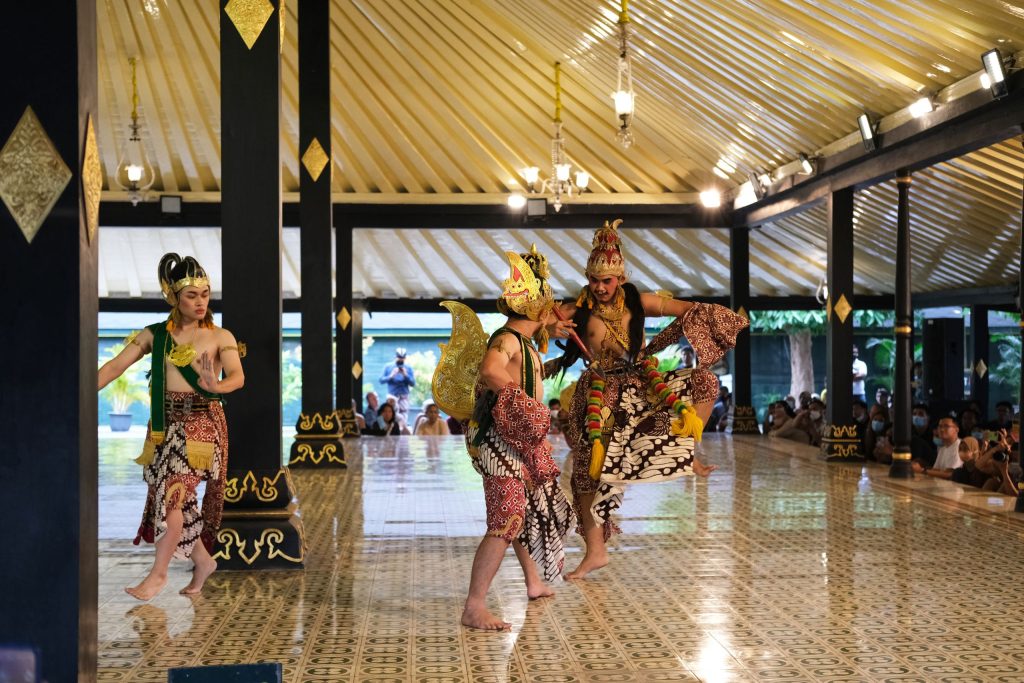Learning a new language can be exciting and rewarding. Still, it often requires more than just studying textbooks and practicing grammar exercises. One incredibly effective way to immerse yourself in a language and culture is through the art of dance. In this blog post, we’ll explore the world of Indonesian dance as a unique and enjoyable method to learn the Indonesian language. From traditional performances to the captivating Indonesian war dance, we’ll delve into how this ancient art form can enhance your language learning experience.
Exploring the Essence of Traditional Indonesian Dance
Traditional Indonesian dance is a mirror that reflects the nation’s diverse history, ethnicities, and stories. With over 17,000 islands, Indonesia boasts an astonishing array of dance forms, each deeply rooted in its respective region. These dances are more than mere movements; they encapsulate the essence of Indonesian life, spirituality, and connection to nature.
From the graceful “Legong” dance of Bali to the dynamic “Saman” dance of Aceh, each dance holds its own significance. Dancers convey stories, rituals, and emotions through intricate gestures, facial expressions, and costumes. This artistic expression transcends linguistic barriers, making it an ideal medium for those looking to connect with Indonesian culture.
The Intensity of Indonesian War Dance
The Indonesian war dance stands out as a powerful embodiment of courage, valor, and heritage among the many traditional Indonesian dances. This dance represents martial prowess, often depicting scenes from historical battles or portraying the strength of warriors protecting their land.
The “Cakalele” dance from the Maluku islands and the “Pendet” dance from Bali are prime examples of Indonesian war dances. The rhythmic beats of the drums and the fierce movements of the dancers bring to life the bravery of Indonesian warriors. Participating in or witnessing such dances allows you to engage with historical narratives and embody the spirit of these brave individuals.
Learning the Indonesian Language Through Dance
Learning a new language can be challenging, but incorporating creative and engaging activities can make the process more enjoyable and effective. Traditional dances provide a unique avenue for language acquisition, requiring a keen understanding of cultural context, body movement, and, often, lyrical expressions. Here’s how you can enjoy Indonesian dance while learning the language:
Cultural Context:
Indonesian dance is deeply intertwined with local customs, rituals, and folklore. Learning about the cultural background of dance can help you connect with its essence, making it easier to grasp the emotions and meanings embedded within the movements. As you study the historical and cultural context, you’ll also pick up Indonesian vocabulary and idiomatic expressions.
Body Language and Gestures:
Traditional dances are often characterized by intricate hand gestures, facial expressions, and body movements that convey messages and emotions. Engaging with these gestures can enhance your understanding of non-verbal communication in Indonesian culture, essential for effective language comprehension and interpersonal interactions.
Rhythmic Language Patterns:
Indonesian dances are accompanied by specific rhythms and music closely aligned with the language’s cadence and intonation. By following the beat and rhythm of the dance, you can naturally absorb the flow of the language, helping you with pronunciation and sentence structure.
Visual Learning:
Watching dancers convey stories and emotions through their movements can aid in understanding the emotional connotations of certain words and phrases in the Indonesian language.
Learning Dance Lyrics:
Many traditional Indonesian dances are accompanied by songs narrating the portrayed stories. Learning the lyrics of these songs not only enhances your language skills and connects you deeply with the cultural narratives they convey.
Vocabulary Enrichment:
By observing and engaging with the dance, you can pick up vocabulary related to body movements, emotions, and cultural elements that might be less apparent in formal language lessons.
Immersive Experience:
Just as language learning is enhanced through immersion, witnessing and participating in traditional dances can provide an immersive experience of Indonesian culture and language.
Immersive Experience:
Just as language learning is enhanced through immersion, witnessing and participating in traditional dances can provide an immersive experience of Indonesian culture and language.
The Symbiotic Relationship Between Dance and Language
Dance and language are deeply intertwined in cultures around the world, and Indonesia is no exception. By immersing yourself in the world of Indonesian dance, you’re not only learning the movements but also understanding the stories, emotions, and traditions that accompany them. This understanding naturally extends to the language, allowing you to absorb vocabulary, sentence structures, and cultural references more organically and memorably.
Furthermore, learning a language through dance fosters a holistic connection with the culture. It helps you appreciate the nuances and intricacies of language that textbooks often overlook. Just as language is a living, evolving entity, so is dance. This dynamic expression adapts to the times while preserving its historical roots.
Conclusion: Enjoy Indonesian Dance While Learning the Language
In conclusion, the allure of traditional Indonesian dance lies in its captivating beauty and its ability to bridge the gap between cultural understanding and language acquisition. As you indulge in the mesmerizing performances of Indonesian dancers, you embark on a journey that weaves together history, art, and language.
Whether you find yourself entranced by the graceful movements of “Legong” or the powerful intensity of the war dances, you’re embracing the heart of Indonesia’s heritage. The intricate gestures, emotional expressions, and vivid costumes tell tales of the nation’s past and present, fostering a deeper connection to the Indonesian language.
So, if you’re seeking an unconventional and enriching way to learn Indonesian, look no further than the captivating world of traditional Indonesian dance. Immerse yourself in the rhythm, stories, and linguistic nuances of this ancient art form, and you’ll find yourself not only learning a language but also forging a profound bond with Indonesia’s cultural identity.


